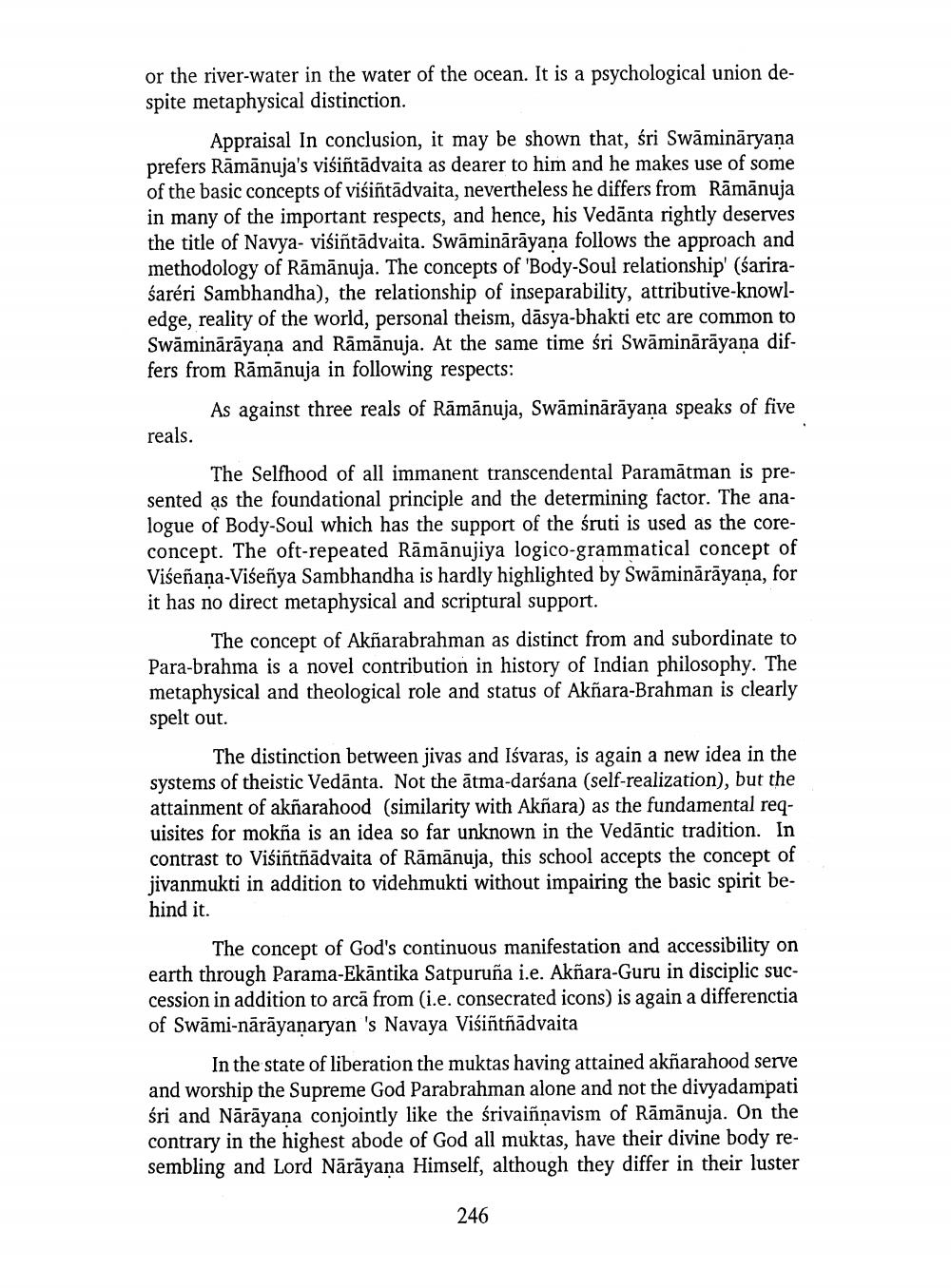________________
or the river water in the water of the ocean. It is a psychological union despite metaphysical distinction.
Appraisal In conclusion, it may be shown that, śri Swāmināryana prefers Rāmānuja's visiñtādvaita as dearer to him and he makes use of some of the basic concepts of visiñtādvaita, nevertheless he differs from Rāmānuja in many of the important respects, and hence, his Vedānta rightly deserves the title of Navya- višiñtādvaita. Swāminārāyana follows the approach and methodology of Rāmānuja. The concepts of 'Body-Soul relationship' (sarirasaréri Sambhandha), the relationship of inseparability, attributive-knowledge, reality of the world, personal theism, dāsya-bhakti etc are common to Swāminārāyana and Rāmānuja. At the same time śri Swāminārāyana differs from Rāmānuja in following respects:
As against three reals of Rāmānuja, Swāminārāyaṇa speaks of five reals.
The Selfhood of all immanent transcendental Paramātman is presented as the foundational principle and the determining factor. The analogue of Body-Soul which has the support of the śruti is used as the coreconcept. The oft-repeated Rāmānujiya logico-grammatical concept of Viseñaņa-Viseñya Sambhandha is hardly highlighted by Swaminārāyana, for it has no direct metaphysical and scriptural support.
The concept of Akñarabrahman as distinct from and subordinate to Para-brahma is a novel contribution in history of Indian philosophy. The metaphysical and theological role and status of Akñara-Brahman is clearly spelt out.
The distinction between jivas and Iśvaras, is again a new idea in the systems of theistic Vedānta. Not the ātma-darśana (self-realization), but the attainment of akñarahood (similarity with Akñara) as the fundamental requisites for mokña is an idea so far unknown in the Vedāntic tradition. In contrast to Visiñtñādvaita of Rāmānuja, this school accepts the concept of jivanmukti in addition to videhmukti without impairing the basic spirit behind it.
The concept of God's continuous manifestation and accessibility on earth through Parama-Ekāntika Satpuruña i.e. Akñara-Guru in disciplic succession in addition to arcā from (i.e. consecrated icons) is again a differenctia of Swāmi-nārāyanaryan 's Navaya Visiñtñādvaita
In the state of liberation the muktas having attained akñarahood serve and worship the Supreme God Parabrahman alone and not the divyadampati śri and Nārāyana conjointly like the śrivaiñnavism of Rāmānuja. On the contrary in the highest abode of God all muktas, have their divine body resembling and Lord Nārāyana Himself, although they differ in their luster
246




